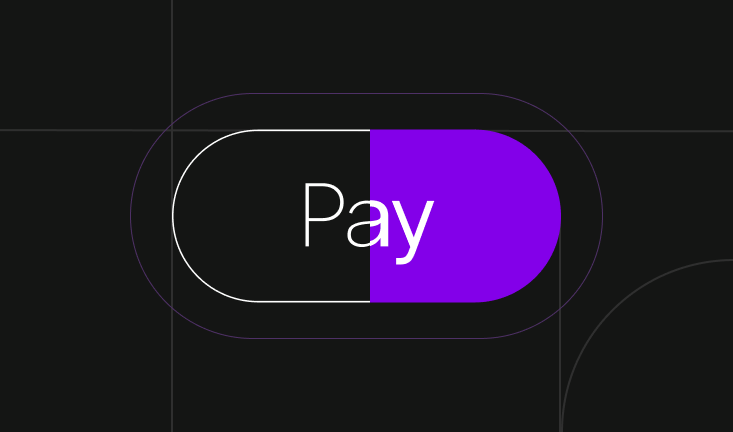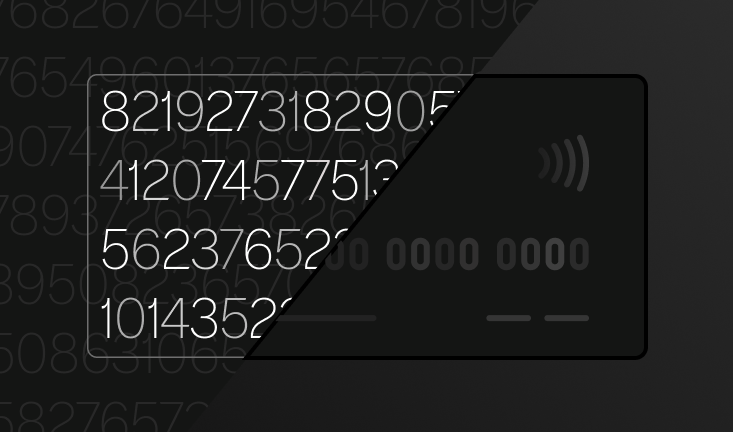
Card numbers are fast becoming a detail of the past. With businesses facing issues like data breaches and unsecure payments, tokenization is emerging as the new norm.
Since card numbers were created decades ago, they weren’t built with today’s digital economy in mind. They now pose massive security risks that can compromise a brand’s ability to build trust with customers. While bank transfers and cryptocurrency comprise the highest amount of fraud, credit card fraud still hit Americans with $58 million in losses in 2024.
Globally, credit card fraud has reached highs of $30 billion in collective losses.
The ripple effect of a credit card’s lack of security is only becoming more stark. A compromised credit card poses short-term and long-term risks for a business – disputed payments chip away at a business’s income, while customer dissatisfaction makes it difficult for them to trust a brand.
This lack of confidence can result in fewer customers and less money flowing your way.
Fortunately, the future of card payments is turning toward tokenization. Able to provide enhanced security for customers and merchants, this new technology is set to change business on a foundational level.
Secure, contactless payment methods are starting to render cards obsolete. While some businesses and customers will still use cards occasionally, the appeal of digital wallets continues to grow for their convenience and security.
One of the biggest reasons cards are becoming a business liability is their number strings, the need for PCI compliance, and the growing need for fast and convenient payment options.
The United States, United Kingdom, and Canada experience the highest rate of data breaches related to payment cards. While these numbers get particularly high during active payment seasons such as Black Friday or holidays, scammers can steal card numbers anytime.
Scammers use a variety of tactics, such as credit card skimming, phishing attacks, or online database leaks to target people’s card numbers. Once stolen, thieves can use these card numbers anywhere online, resulting in fraud or damaged business reputations.
PCI Compliance (short for Payment Card Industry) is a set of strict standards that keep customer card data secure and private. Merchants that fail to meet these requirements put their customers at risk and risk massive fines.
The card processing ecosystem is complex, comprising everything from POS devices to online shopping applications. The PCI DSS (or Data Security Standard) is a repository of preventative measures to make it harder for thieves to access and exploit card information, though it’s still not foolproof.
The risk for compromised cards is still high enough to result in regulatory bodies and institutions moving away from static card storage altogether. According to American Banker, card-not-present fraud is one of the most common reasons banks are addressing static card security measures with new approaches.
Despite the best effort of businesses and institutions, card numbers still remain a security liability. Businesses that don’t move away from them are at risk of fraud, compliance issues, and financial losses. By comparison, tokenization in payments is faster, more secure, and protects all parties.

Tokenization solves the biggest security flaws of traditional card payments. Instead of storing actual card numbers, merchants store a unique, encrypted token that a customer can only use within a specific transaction or device.
Even if hackers steal a token, they cannot use it outside its intended environment.
Tokenization in payments has a reliable step-by-step process that addresses common security pitfalls:
According to Marketsandmarkets, the rise in card fraud and increasing need for more secure payment methods have been key drivers for tokenization’s growth. Their study estimates the tokenization market will exceed $5 billion by 2026.
Major payment processors are already making the shift and seeing results. A 2024 Visa study revealed tokenized payments saved an estimated $650 million in fraud in the span of a year. The same study estimated tokenization can reduce the risk of fraud by up to 60%.
With leading payment platforms like Google Pay now depending on tokenization to meet customer demand, real card numbers will fall out of favor even faster.
Tokenization isn’t just a security measure: it’s the foundation of modern payment systems. It covers bases for customers and merchants by reducing costly fraud, chargebacks, and payment disputes.
What else does tokenization in payments do for the in-person and online shopping experience? Let’s take a look.
Digital wallets (such as Google Pay and Krepling Pay Wallet) use tokenization to allow instant, card-free transactions. This feature means no manual card entry and no passwords: just biometric authentication and instant payment.
While tokenization doesn’t automatically free a business from maintaining best security practices under PCI compliance, it simplifies the process. Tokenization makes it easier for merchants to meet PCI DSS standards due to reducing the amount of system components necessary to stay secure.
Tokenized transactions are impossible to reuse outside their intended purpose, which is bad news for scammers and great news for businesses. Less fraud means fewer disputed payments and chargebacks, with at least 75% of the latter involving fraud.
Krepling Pay reduces chargeback fraud by up to 60% by ensuring tokens cannot be manipulated.
E-commerce, in-store POS, and even social commerce are integrating tokenized payments. Merchants using Krepling Pay’s tokenized infrastructure can accept payments across web, mobile, and IoT devices securely.
While tokenization in payments prioritizes security, it also helps create a seamless, future-proof payment experience.
We want businesses and customers to enjoy smooth and secure payment experiences. As such, we’ve fully transitioned Krepling Pay to a tokenized payment system to eliminate the need for static card storage.
This means fewer credit card risks and a flexible, faster, and secure checkout.
Krepling Pay never stores raw card numbers: only encrypted tokens. Even if a scammer intercepts a customer’s data, these tokens cannot be decrypted or reused.
When you’re too busy to manually analyze and react to user behavior, AI will help fill in the gap. We provide real-time fraud scoring that dynamically adjusts token permissions based on user behavior.
For example, if an abnormal transaction is detected, Krepling Pay’s AI auto-invalidates the token before fraud occurs. This proactive approach works to prevent issues before they happen, saving you time and money on costly chargeback fraud or payment disputes.
Implementing the security benefits of tokenization has never been easier. Merchants who sign up with Krepling Pay Wallet can offer customers features such as:
Krepling Pay merchants see a 42% reduction in checkout abandonment after switching to a tokenized payment method. Their chargebacks drop by 60% due to tokenized authentication, while their fraud losses are reduced by up to 87%.
Tokenization is just the beginning of a more secure buying experience for customers and merchants. The industry is rapidly moving beyond traditional credit cards, so businesses need to pivot as soon as possible to keep pace.
Let’s take a look at emerging developments and what they mean for your business’s future.
More businesses and institutions are catching onto the security risks of cards. As a result, contactless payments – which may or may not include cards – are expected to comprise at least 40% of all card transactions in the United States by 2026.
Major players like Mastercard and Visa have been rolling out contactless payment options, replacing physical card numbers with tokenized credentials.
A frictionless experience could mean the difference between a single purchase and a loyal customer. Krepling Pay continues to raise the bar by building adaptive tokenization, enabling transactions to happen in the background without user input.
We’ll soon enable payments to become triggered by context-based actions, such as automatic payments when a customer enters a store.
Tokenization in payments is just the start of a more efficient and secure business landscape. Payments will soon become entirely invisible, eliminating friction for customers while maintaining security standards.
We want customers and businesses to thrive in an increasingly interconnected world. When fraud, chargebacks, and data breaches threaten everyday purchases, Krepling Pay provides a solution you can count on.
Krepling Pay provides convenient tokenization solutions that eliminate common frictions in your checkout such as outdated user interfaces and payment security concerns. Tokenization targets the rise in credit card fraud by eliminating the need for credit card numbers, replacing these faulty processes with single-use tokens that scammers can’t replicate.
Not only does tokenization drastically reduce card fraud and chargeback rates, we go the extra mile by providing adaptive tokenization that responds to user behavior.
We’re paving the way for a frictionless and secure purchasing future where neither customers or businesses have to worry about payment transactions. Even better, we help customers enjoy the purchasing process more than ever with fast, invisible payments that eliminate the need for tedious forms.
Learn how Krepling Pay can power your business—whether you’re enhancing your existing checkout or launching a fully embedded, end-to-end retail experience.